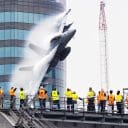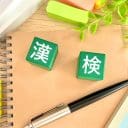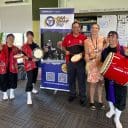南半球便り
<その3>
カウラ訪問(2021年2月24日)


本記事の内容は、在オーストラリア日本国大使館ウェブサイトより転載。他の号は下記より確認可能。
Web: www.au.emb-japan.go.jp/itpr_ja/bilateral_official_visits_jp.html
「カウラって、どこ?」
日本の知人に「カウラに行ってきた」というと、大抵の方からは「どこ、それ?」という反応が返ってきます。日本における知名度からしたら致し方ないのかもしれませんが、カウラが日豪関係において果たしてきた重大な役割に鑑みると、残念でなりません。
カウラは、キャンベラから北方へ約190キロ、車で2時間強の場所にある人口約1万人の小さな町。なだらかな丘が波のように連なる美しい牧草地の中に位置する平和で静かなところです。
カウラ・ブレイクアウト
この小さな町が、日豪関係に携わる両国の関係者の間で語り継がれてきたのは、そこが近代史上最大の捕虜脱走事件と言われる「カウラ・ブレイクアウト」の舞台となったからです。今を遡ること75年余の1944年8月5日未明、カウラ捕虜収容所に収容されていた日本人捕虜の集団脱走事件が発生。脱走時の銃撃等で、日本人捕虜234名、豪州人衛兵4名が死亡、辛くも脱走した300余名の日本兵も翌週には捕えられ、成功した者はひとりもいなかったと伝えられています。
このあたりの事情については、いくつもの公刊本に書かれており、私も『カウラの突撃ラッパ-零戦パイロットはなぜ死んだか』、『鉄条網に掛かる毛布』などで読み学ぶにつけ、豪州に赴任したら間を置かずに必ず訪れたいとの気持ちが高まってきました。
感動
そこで、大使としての信任状捧呈前でしたが、2月15日にカウラを訪れ、当時日豪双方において貴重な人命が失われたことに対し、深く頭を垂れ、心より哀悼の意を表してきました。何よりも強く感じ入ったのは、悲惨な過去にも拘わらず、ウエスト・カウラ市長をはじめとするカウラの関係者の方々の間に、日本に対する心温まる配慮と気遣いが溢れていたことでした。1964年にカウラ共同墓地の一角に「日本人戦没者之墓(日本人戦争墓地)」が開設され、大戦中に亡くなられた日本人戦争捕虜と民間人抑留者の遺骨が豪州全土から収容(524人埋葬)されました。その日本人戦争墓地がカウラ市役所や関係者の方々の努力により、実に丁寧に綺麗に維持されており、日本人として深い感動を覚えました。
加えて、近隣には、1978年に造園家の中島健氏が設計し、グリフィス理事長が率いる日本庭園文化センター財団が維持管理する回遊式日本庭園の「カウラ日本庭園」が凜とした佇まいを見せていました。おそらく南半球随一の美しい日本庭園であり、乾燥しがちな豪州にあっては稀有の水と緑の世界を実現していました。望郷と無念の思いを抱いたままに散華した英霊の魂が、日本を彷彿とさせるこの庭園で優しく癒やされているのではないかと想像を巡らせました。
年間4万人を超える豪州人が訪れる観光名所となっているとのことであり、カウラの捕虜収容所で発生した衝撃的な脱走事件と合わせて考えると、カウラが「日豪関係の精神的聖地」と呼ばれてきた理由が良く理解できる気がしました。
地元紙のインタビューでも、「ブレイク・アウト」で失われた貴重な生命の犠牲に対して哀悼の意を表明するとともに、日本人墓地等を整然と維持し続け、戦後の日本との友好関係の構築に腐心をされてきたカウラ市関係者の努力に深い敬意と感謝の念を表明した次第です。


相互理解と相互信頼
1944年8月5日の未明、南半球の厳冬の最中、ナイフ、フォーク、野球バット等だけを手にして機関銃を備えていた衛兵に対して決起した日本兵の心理は、長年豪州人の理解を越えたものとみなされてきました。今なお「狂信的」と表現されることもあります。無理がないのかもしれません。平和を享受している今の多くの日本人にとっても、想像しがたい面があるからです。
「生きて虜囚の辱めを受けず」との戦陣訓に囚われ、武人としての名誉を優先したとの解釈は当然あるでしょう。同時に、故郷を偲び、父母の安全を願い、妻や恋人や残される子供達への断ちがたい思いを抱えつつ、無理な蜂起に立ち上がった各人の苦悩と絶望がどれほど深いものであったか。日豪間の相互信頼が進んだ今だからこそ、理解が促進される部分もあるのではないかと感じました。
安全保障の協力
かつて干戈を交え、カウラの悲劇を経験した日豪両国も、今や安全保障面での協力を強力に推し進める間柄となりました。豪州軍と自衛隊の間では共同演習、共同巡航がたびたび行われ、さらには昨年11月には、日、豪、印、米の4カ国で共同海上演習「マラバール」が行われるまでに至りました。
過去を忘れず、しかし、それを糧にして和解を達成し、協力を深化させてゆく。これこそが、カウラで失われた日豪双方の貴重な人命に報いる道であると思いながら、キャンベラへの帰途に着きました。8月の慰霊祭、9月の桜祭りの時期をはじめとして、カウラには事あるたびに足を運ぼうと思っています。
在オーストラリア日本国大使 山上信吾



やまがみしんご
東京大学法学部卒業後、1984年外務省入省。コロンビア大学大学院留学。茨城県警本部警務部長という異色の経歴を経て在英国日本国大使館公使、国際法局審議官、総合外交政策局審議官(政策企画・国際安全保障担当大使)、日本国際問題研究所所長代行を歴任後、17年国際情報統括官、18年経済局長。20年12月、在豪日本大使に着任。
News from under the Southern Cross
Edition 3
Visit to Cowra (2021/2/24)


“Where on earth is Cowra?”
When I mention to Japanese acquaintances that “I’ve been to Cowra”, most of them would give the reaction “Where’s that exactly?” While this reaction is understandable given it is not well-known in Japan, when one considers the extraordinarily important role that Cowra has played in Japan-Australia relations, one can’t help but be disappointed with such a response.
Cowra is located about 190 kilometres north of Canberra, taking a good 2 hours to reach by car. Being a small town with a population of around 10,000, Cowra is a quiet, peaceful place, located in the midst of beautiful pasture with hills that roll on after one another like waves.
The Cowra Breakout
The reason this small town continues to be talked about by those involved in Japan- Australia relations over decades is because it was the scene of the largest escape attempt by prisoners of war in modern history – the ‘Cowra Breakout’. Just over 75 years ago, in the early morning darkness of the 5th of August 1944, a group of Japanese prisoners of war held at the prisoner of war camp in Cowra attempted to escape. In the ensuing firefight, 234 Japanese prisoners of war and 4 Australian soldiers were killed. It was said that those 300 or more Japanese soldiers that did manage to escape were re-captured over the following week, and not one successfully managed to get away.
A number of publications have been written about this incident, and the more I learned from reading works such as “The Bugle Call of Cowra” and “Blankets Over the Wire”, the stronger I felt that I had to visit this place soon after taking up my post in Australia.
Emotions
Although it was just before presentation of my credentials as Ambassador, on the 15th of February I undertook a journey to Cowra. There I lowered my head in reverence and offered my sincerest condolences in memory of those precious lives lost on both the Japanese and Australian sides at that time. What particularly struck me was that despite the tragedy of the past, Mayor Bill West and the citizens of Cowra showed a full of sincere consideration and thoughtful gesture towards Japan. In 1964, one section of the Cowra general cemetery was set aside as “A gravesite for those Japanese that died during the war (Japanese War Cemetery)”, and the remains of Japanese prisoners of war and civilians who had perished during the war (524 in total) were recovered from across Australia for reburial at Cowra. The Japanese War Cemetery continues to be dutifully and beautifully maintained by the Cowra City Council and related stakeholders, and as a Japanese citizen I was profoundly moved.
Moreover, my visit to Cowra allowed me to see the nearby “Cowra Japanese Garden”, a dignified, strolling-style Japanese garden designed by garden architect Nakajima Ken in 1978 and maintained by the Cowra Japanese Garden and Cultural Centre under the leadership of Chairman Bob Griffiths. It is probably the most beautiful Japanese garden in the Southern Hemisphere, and in Australia, with its tendency for dry weather, it manifests a unique world of water and verdant green. I allowed my imagination to run rampant as I envisaged the souls of brave soldiers, who perished with sense of chagrin and thoughts of home, being gently consoled by this garden which would remind them of Japan.
Being a tourist spot, the garden attracts over 40,000 Australians annually. When combined with the dramatic events of the breakout attempt at the Cowra prisoner of war camp, I felt that I truly understood the reason why Cowra is referred to as ‘the Spiritual Home of Japan- Australia Relations’.
In an interview with a local newspaper, I expressed my condolences for those precious lives sacrificed in the ‘Cowra Breakout’, and conveyed my deep respect and gratitude for the efforts of the citizens of Cowra in continuing to maintain and preserve the Japanese War Cemetery in good condition and for their ceaseless endeavours in building ties of friendship between Australia and post-war Japan.


Mutual Understanding and Mutual Trust
It has been viewed for many years that the mindset of Japanese soldiers, who on the 5th of August 1944, amid the early morning darkness and severe cold of the Southern Hemisphere in mid-winter, took up no more than knives, forks, and baseball bats to face off against machine guns, was something that transcended the understanding of Australians. Even now it is sometimes described as “fanatic”. Indeed you may say so from today’s perspective. It is because many Japanese of today too, who enjoy living in peace, would struggle to understand such a mentality in full.
One might say that soldiers, bound by the military doctrine to ‘A soldier must never suffer the disgrace of being captured alive’, would prioritise their honour as a warrior. At the same time, I imagine how deep was the suffering and despair of those who, with thoughts of home, concern for their parents’ well-being, and unable to sever all thoughts of wives, sweethearts and children, faced off against such insurmountable odds. I do feel that the development in mutual trust that exists today between Japan and Australia may help accelerate an understanding of the background of this tragic event.
Security Cooperation
Japan and Australia, despite their history of conflict and the tragedy at Cowra, are now firmly engaged in promoting security cooperation with one another. The ADF and SDF periodically taken part in joint exercises and joint transiting of ocean areas, and in November of last year took part in the quadrilateral naval exercise “Malabar” together with India and the United States.
While lest we forget the past, it can serve as a basis for reconciliation and promote further cooperation. As I made my way back to Canberra, I realised that this is the path for us to repay to those precious Japanese and Australian lives lost at Cowra. I therefore plan to visit Cowra whenever the opportunity presents itself, starting with the memorial service on 5th August and the Cherry Blossom Festival in late September.
YAMAGAMI Shingo – Ambassador of Japan to Australia



YAMAGAMI Shingo
Upon graduating from the University of Tokyo, he joined the Ministry of Foreign Affairs of Japan in 1984. He also studied at the Graduate School of Columbia University. His overseas assignment includes Washington D.C., Hong Kong, Geneva and London. After being seconded to the National Police Agency and the Japan Institute of International Affairs, he assumed the role of Director-General of the Intelligence and Analysis Service and then Director-General of the Economic Affairs Bureau. In December 2020, he was dispatched to Canberra as Ambassador to Australia.











